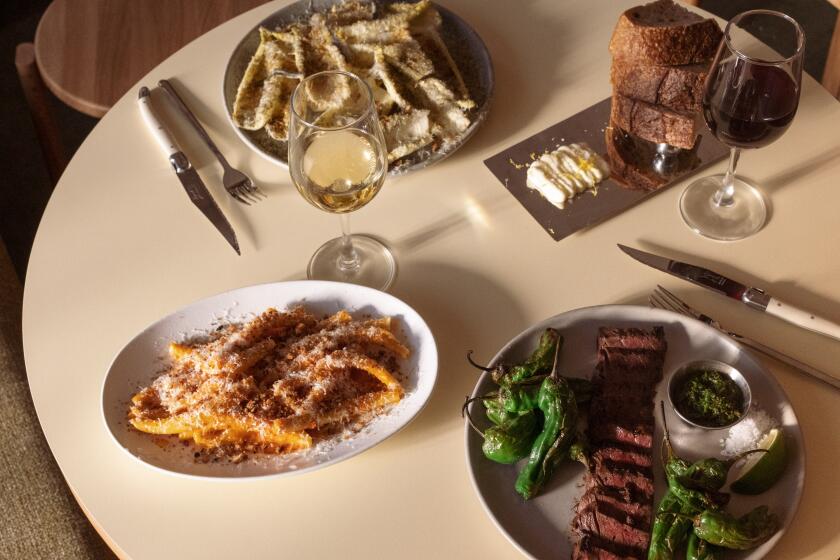Review: At the best Korean restaurant outside Ktown, start with the amazing dumpling soup
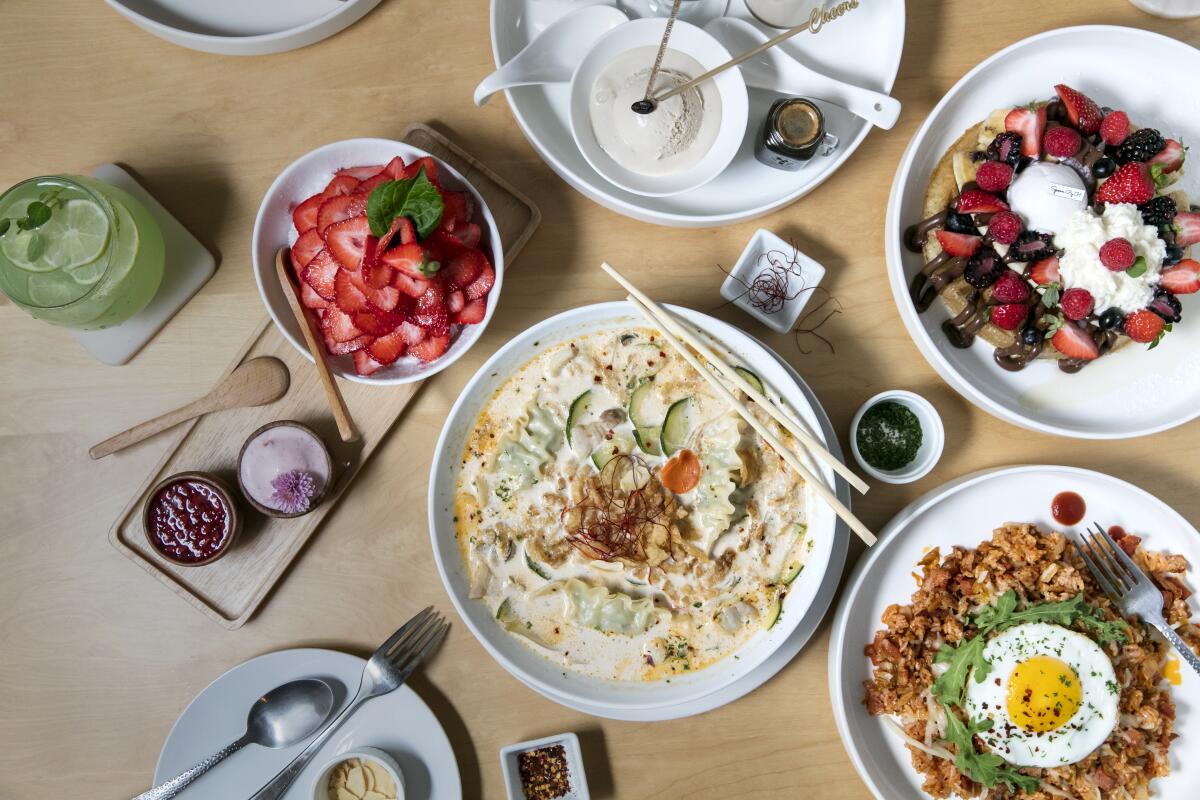
As a teenager, Yoonjin Hwang won a piano scholarship playing Chopin’s polyrhythmic “Fantaisie-Impromptu.” Later, at Oberlin College, she studied the pipe organ, exploring its profound range of timbres. To disappear now into a bowl of her pork belly and dumpling soup at her Beverly Boulevard cafe, Spoon by H, is to taste the food of a chef who’s been thinking about improvisation and texture and harmonics her entire life.
The impetus behind the dish is tteok mandu guk, Korean rice cake and dumpling soup. Kelp and anchovies often flavor the traditional stock; two years ago, when Hwang began developing her own version, she thought about substituting a richer, cloudier broth, in the vein of tonkotsu ramen. She landed on a combination of simmered pork and beef bones enriched with pork belly. It’s milky and meaty without spilling into oiliness.
She packs the dumplings with pork, vegetables and tofu, crimping their seams into even, rolling waves. The dough hugs the fillings; it stays sturdy while submerged but then yields to the first bite. Glassy mung bean noodles join the dumplings and the chewy, oval rice cakes, and then a full choir pipes up: thinly sliced carrots and zucchini, a handful of battered onion bits, red chile flakes. The broth conducts and augments the flavors; the ensemble commands your attention.
Hwang’s soup is the stuff of civic pride — the kind of dish you introduce to visitors to watch them blink and nod in pleasure, and to help them understand the wonder of Los Angeles dining. It’s even more quintessential L.A. to find such magnificence in an unassuming strip-mall dessert cafe with paper snowflakes decorating its windows.

Many of us, myself included, learned about this dish over the last year via ripples from a social media rave review by Momofuku chef David Chang. In November he posted on Instagram: “@spoonbyh is all that’s wonderful in the restaurant business … It’s my restaurant of the year.” Sure, I was curious but figured his mention would create a mob scene. On the phone recently Hwang mentioned that, after Chang’s shout-out, Spoon by H had its slowest two weeks since she’d opened in 2012. Apparently everyone thought it was smart to hang back.
But local publications eventually caught on and word spread. Saturday lines started trailing down the sidewalk, and Hwang began receiving the next-level attention she deserves.
The spotlight changed the DNA of her business. Spoon by H, with a dining room that seats just 20 people, serves frosty treats primarily. Hwang’s ambition has always been outsize for the space. In the restaurant’s tiny kitchen she creates meticulous sweet sculptures: smoothies ringed by halved grapes; shaved ice piled with exacting squares of mango, or towers of watermelon balls, or starbursts of sliced strawberries. One drink tray presents shots of espresso, milk tea and milk tea ice cream meant to be poured over or enjoyed alongside a tall glass of ice cubes shaped like coffee beans. And there are waffles. We’ll get to the waffles.
In the beginning, she served only simple sandwiches and soups with udon noodles. Then she started trotting out daily whims: japchae and sometimes bibimbap, pastas with creamy seafood sauces, crab-stuffed mushrooms, or pork belly lettuce wraps. Waits for food began to stretch out with all the recent notice; dishes came out erratically when I had my first meal here midyear.
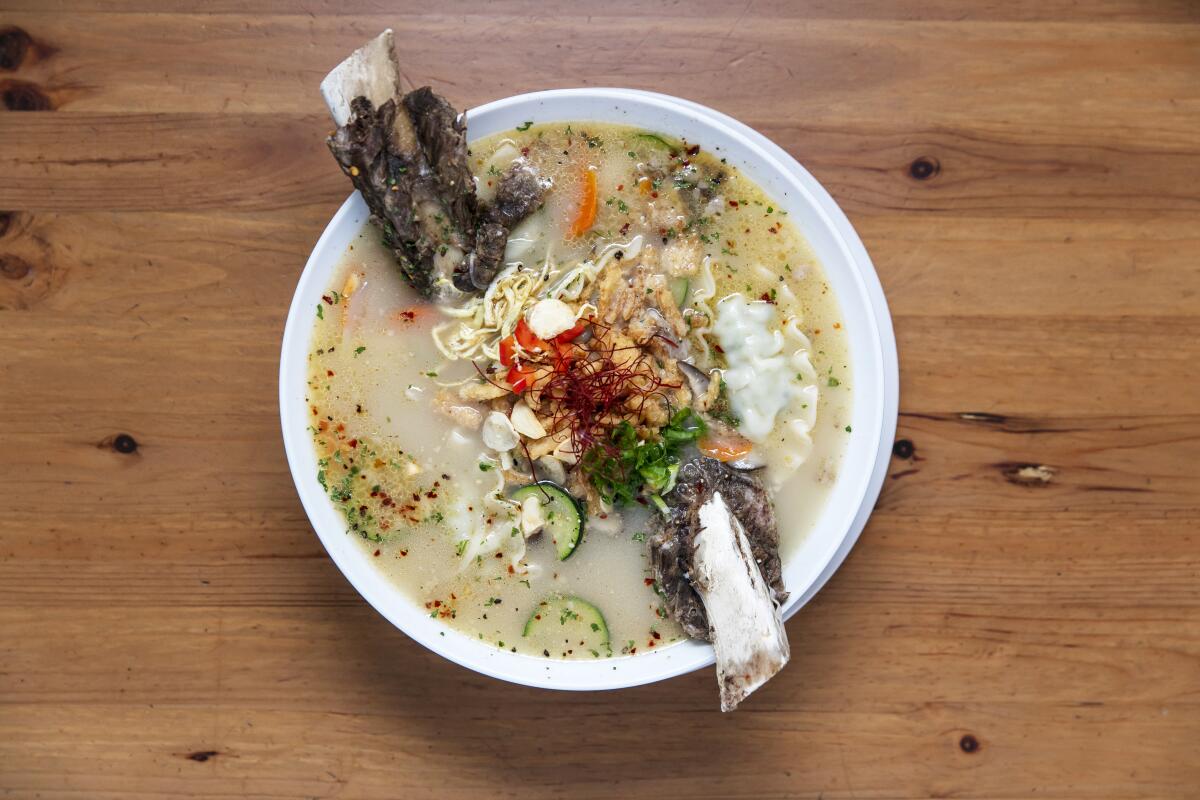
Hwang has since streamlined. The desserts are still objets d’art chiseled from fruit, but the savory items currently total 10, including four sandwiches plus specials (say, a pleasant udon stir-fry with chicken or pork or vegetables sauced in gochujang) announced on an iPad. Her mother helps in the kitchen; either Hwang or her brother takes orders at the counter. The pace has calmed and the food arrives faster, particularly around noontime opening. Sometimes a food runner brings you all the utensils you need; sometimes you’ll need to retrieve soup ladles and chopsticks from the stand in the corner yourself. Regulars camp at tables along one wall lined with love letters to the restaurant. Larger parties fill the center communal table underneath big round chandeliers.
The pork belly and dumpling soup is Hwang’s magnum opus. It gets worthy competition from a recent variation featuring braised on-the-bone short rib in an alabaster broth that thrums with beefiness from oxtail and bone marrow.
Hwang also makes two sensational takes on fried rice. One highlights combination of righteously smoky bacon and kimchi made by her mother and aged a month so it burns mellow. Grated mozzarella melts slowly into the mix; the yolk of a sunny side up egg beams on top. For the other, Hwang celebrates Spam; Korea’s consumption is second only to that of the United States. She molds spicy fried rice riddled with cubed Spam into a shape not unlike Americana meatloaf, with an extra slab of Spam jauntily angled on the side and another radiant egg on top.
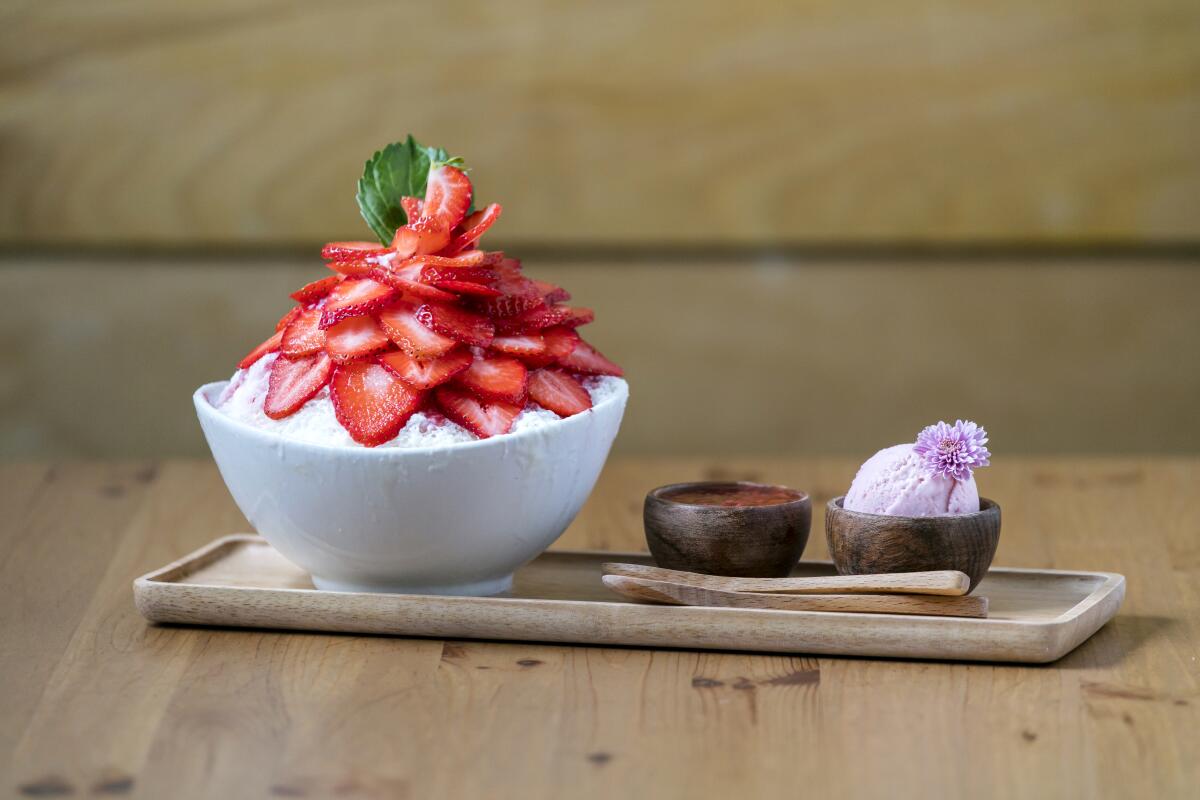
I like the fruit spectaculars, though I’d sidestep the salted caramel shaved ice; its flavor evokes diner pancake syrup. I love the dessert waffles. Unless you’re in a hurry, don’t be deterred when Hwang’s brother, Taewon, deadpans that it will take 40 minutes for the waffle to be ready. It often arrives just as I’m finishing the soup and rice, right on time.
The waffle isn’t served particularly warm. Its appeal is more about texture than temperature. The fermented batter includes rice flour for airy crispness. As firmament it supports bruléed bananas and tumbling berries and billows of whipped cream. Squiggles of Nutella complete one option, also garlanded with fruit, known as the Triple. They’re all pretty, but after an admiring moment you want to eat them too. The garnishes lean sweet but not cloying. They model balance.
As with music, Hwang unravels a theory — a recipe, an idea — until she owns it for herself. I asked her how playing an instrument is like cooking for her.
“They’re very similar,” she said. “With the organ my hands and feet were always moving, always doing more than one thing. But mostly they both take practice. Lots and lots of practice.”
At Spoon by H, practice led to mastery.
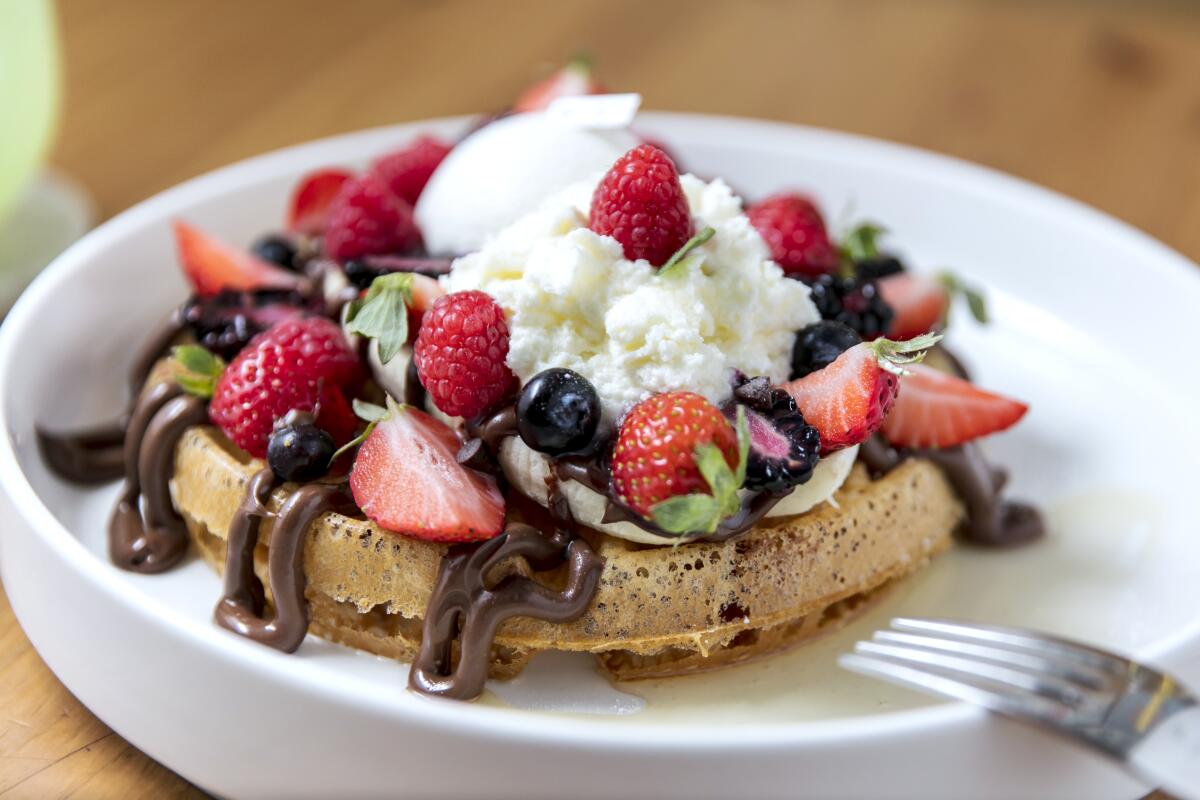
Spoon by H
More to Read
Eat your way across L.A.
Get our weekly Tasting Notes newsletter for reviews, news and more.
You may occasionally receive promotional content from the Los Angeles Times.










